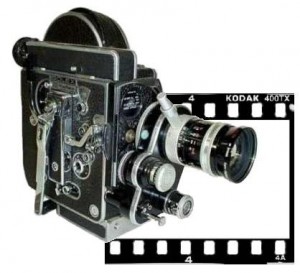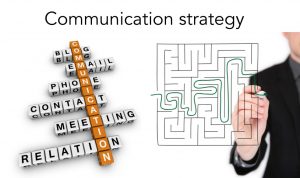
Last summer sitting in my master’s classes at Syracuse University, I had two major epiphanies. The first was how much psychology plays in public relations, and the second was how flexible making a public relations measurement and evaluation plan can be.
For me, this was uncomfortable. I came into my Measurement and Evaluation in Public Relations class expecting a hardcore formula to set to work immediately. After a week-long residency of listening to the professor and taking notes on everything from concepts in Daniel Kahneman’s Thinking Fast and Slow to the 1-9-90 rule of social media, I walked away frustrated at my inability to put these lessons into a nice tidy system that I could easily grasp. As the semester progressed, though, I came to understand why there are no fast and hard rules in M&E.
The basics of a public relations measurement and evaluation plan
M&E in PR is an evolving concept. As old and valueless measurement techniques, such as AVEs and impressions, begin to lose standing and new and meaningful ones, like engagement and conversion, take over, the area is growing into a powerhouse for the industry. Combined with a significant growth, the subjectivity of M&E makes it impossible to assign any one-size-fits-all formula. As objectives drive PR M&E plans, each organizations has its own unique needs.
According to Vincent McCabe, Inc., while remaining flexible, there are four categories of measurements you should be analyzing:
1. Inputs
The easiest to measure, inputs are the products you produce. How many news releases did you distribute in your period for evaluation? How many community events did your spokesperson present at during the same time? Be careful here, though, since we all like to feel busy, we can lose ourselves in the details. Once we do that, it’s easy to lose sight of the objective and not align our efforts accordingly.
2. Outputs
Digging a little deeper, outputs look into perception. Was the media story positive, negative or neutral? Where did the coverage appear in the publication? How prominent was your organization in the video? Through analysis, such as a media evaluation, you can determine how your organization is being perceived among a target audience during a certain evaluation period.
3. Outtakes
The hardest to measure, outtakes look at awareness and education. What and how did opinions about your organization change before and after a particular event? Who knows about you now that didn’t before? With primary research studies showing before-and-after effects, your efforts to raise awareness, change opinions and educate/inform a target public can be evaluated.
4. Outcomes
The sweet spot and where you really determine if you “moved the needle,” outcomes are when you’ve affected a target audience’s behavior. How many people registered to vote? How many people switched to your service from the competitor’s? Through tools such as relationship surveys, PR proves its worth to the bottom line through M&E of outcomes.
These measurements are evaluated along the axis of the Communications Funnel based on the Diffusion of Innovation Theory by E.M. Rogers. The five steps involved in the Communications Funnel flow from (1) creating awareness about your product or organization; providing information to (2) increase knowledge about your product or organization; appealing to your target audience by (3) developing interest in your product or organization; positioning your product or organization to (4) foster preference over your competition among the target audience; and finally to (5) motivate the action you need the target audience to take in reference to your product or organization.
Steps for creating a public relations measurement and evaluation plan
As a final project for my master’ class, I developed a PR M&E plan for securing new clients for Aubia Communications. You can view the presentation here. Using a framework that plots your one I and three Os against the five stages of the Communications Funnel, you can develop a plan that meets your unique needs.
1. Understand the business objectives.
There are three basic categories of business objectives or, what is commonly referred to as, coin of the realm : 1) increase revenue; 2) reduce risk; and 3) reduce costs.
2. Identify the business stakeholders
Who are the people who are integral to the success of the organization? Why are these people vital for success?
3. State the unique challenge or opportunity
What is the organization facing? What is the role of PR?
4. Do your research
Only through research methods, such as continuous environmental scanning, are you able to understand what is happening, predict where the trends lie, who the company’s actions will affect, and how you can help.
5. Segment the target audience
Who are the people that need to be reached? Why are they important to your communications efforts? Where are they? Create profiles to help you better understand them.
6. Align communications objectives
To be an integral function to the business, your communications objectives should support what the organization is trying to do to be successful.
7. Determine your strategies and tactics
How will you achieve your objectives? With what tools will your carry out your strategies?
8. Set your Key Performance Indicators
KPIs are the milestones you set on the way to achieving your objectives. Depending on the objective, these can be anything from reaching a particular number of downloads on a white paper to how many blog readers sign up for a newsletter. As the area evolves, trial and error accounts for much of the development of PR M&E plans.
9. Decide how you’ll continue M&E after the program ends
M&E don’t necessarily end when your program, event or campaign ends. As you continue to be aware of the business environment, you will need to map out how M&E will stay in effect and support the organization.
10. Report results
Without the pot of gold at the end, no one cares to chase the rainbow just for the sake of the rainbow. Create a reporting structure that gets in front of your CEO and clients on a regular basis and proves your worth to the organization.
How will you make your public relations measurement and evaluation plan?
There is no exact way to make a PR M&E plan, but the necessity for one in today’s field is apparent. I would love to hear your ideas for how to develop an effective plan.



